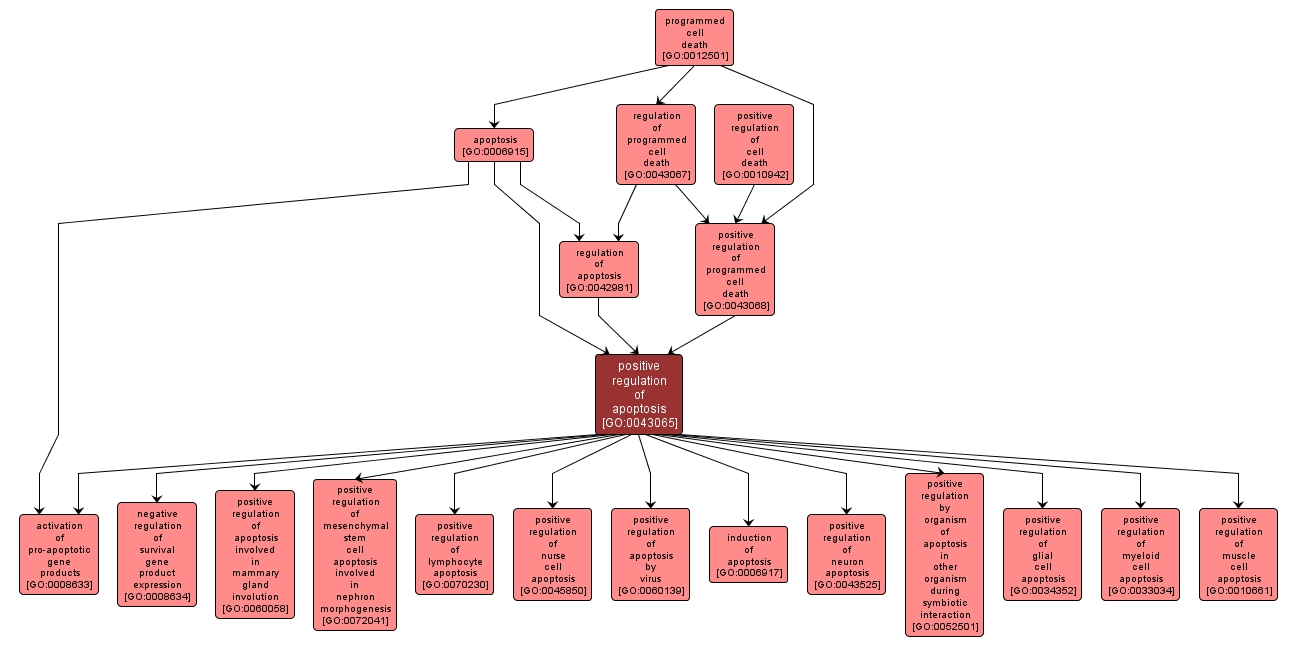GO TERM SUMMARY
|
| Name: |
positive regulation of apoptosis |
| Acc: |
GO:0043065 |
| Aspect: |
Biological Process |
| Desc: |
Any process that activates or increases the frequency, rate or extent of cell death by apoptosis. |
Synonyms:
- stimulation of apoptosis
- up-regulation of apoptosis
- upregulation of apoptosis
- activation of apoptosis
- up regulation of apoptosis
|
|

|
INTERACTIVE GO GRAPH
|














